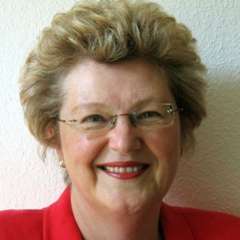It may be the first encounter of a six-year-old going to the opera – the red velvet seats with hi-rise cushions for children, the big hall with its imposing chandelier, house lights go down and then …. a puppy runs onstage straight into the arms of Dorothy. Big applause – of course for the dog! Just like in the legendary movie with Judy Garland, Toto will be tossed and swooped up by a tornado and taken to Munchkin Land. Here on stage, the rainbow-coloured tornado dumps the house ungently onto the Wicked Witch of the East, killing her, much to the delight of the Munchkins.
And so the story starts of how Dorothy tries to get back home. She meets the Scarecrow, the Tin Man and the Lion, each of them looking for an attribute they think they don’t have – a brain, a heart, and courage. They are told that the great Wizard of Oz will be able to grant their wishes. Once the foursome reaches Emerald City, the Wizard first asks them to put the Wicked Witch of the West out of action and bring some proof. Against all odds and purely by chance, Dorothy finds out that the Witch melts when she comes in contact with water. It then turns out that the Wizard is only a kind old gentleman whose most fervent wish is to also to return home. True to the original story, there is a happy end for all.
The Komische Oper continues its tradition of producing a "major opera production for children over six on the main stage". The Wizard of Oz, first performed in Zurich in 2016, is Italian composer Pierangelo Valtinoni’s third opera at the Komische – after "Pinocchio" and "The Snow Queen" – who is continuing the music-theatrical cycle. The score is descriptive and melodious at best, with a reverence to Carl Orff’s Carmina Burana in a choral number and several jazz elements: bland and innocuous, at worst. It certainly won’t put anyone off, but there are no hit tunes for which it will be remembered. Ivo Hentschel guides the orchestra expertly, taking his cues from the stage activities and the many special effects.
It is stage director’s Felix Seiler’s show. Along with his set designer Nikolaus Webern, video sequences by Andreas Inacsics and the very inventive and lovingly detailed costumes of Linda Schnabel, Seiler is true to the story by L. Frank Baum, first published in 1900. The libretto by Paolo Madron has been translated into vernacular German by Hanna Francesconi and thankfully all singers are very mindful of their diction – after all, there are no surtitles because the young target audience may not be able to read so fast yet. Seiler makes use of the full compendium of stage tricks available – video projections, lightning special effects, traps for making witches disappear, flies for balloons to take off, painted drops for over-dimensional skyscrapers – all great fun, with tongue-in-cheek socio-cultural comments here and there. The citizens of the Emerald City are the part of a consumer society that believes only in what they see without questioning its validity and thus fall for the charlatan Wizard; the demeanour and outfit of the Queen of Mice bears a striking resemblance to Queen Elizabeth; the Witch of the West wreaks havoc with the climate and lets the fertile Midwest dry up. There is even a small salute to Somewhere over the Rainbow... it is the ringtone on the gates to the Emerald City!
Alma Sadé is Dorothy, her young soprano and excellent diction, along with her empathy for the role, contributing to a very authentic interpretation. Warm-toned baritone Tom Erik Lie is the Tin Man looking for his heart. Tenor Christoph Späth is the Scarecrow, searching for a brain and not realizing that he already has a very high IQ. Carsten Sabrowski is the bass Lion with a penchant for vanity, combing his rich mane to look his best while searching for courage. They form an homogenous trio, each identifying with their character and transporting their humanity. Bass Karsten Küters is the Wizard, cleverly making the best out of his predicament. For mezzo Christiane Oertel, the role of the Wicked Witch of the West is great fun and even her pronounced vibrato fit the role perfectly. Soprano Mirka Wagner plays two good witches and the Queen of the Mice and gives each role a distinctive and convincing personality.
Dagmar Fiebach and Jean-Christophe Charron have worked magic on the children’s and regular chorus, respectively (both groups have leading roles in this work) as Munchkins, monkeys, mice and citizens of the Emerald City.
All in all, a most enjoyable two hours of entertainment and hopefully positive introduction to opera to the many children attending the opera and their grown-ups.




